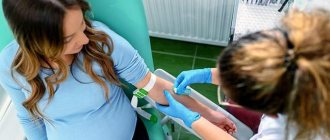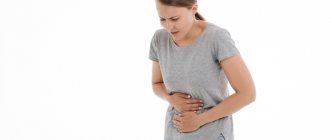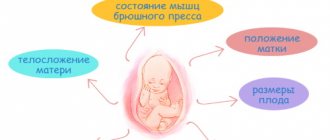Any living creature must receive nutrients to maintain vitality, growth and development. The human embryo is no exception; it needs a sufficient amount of vitamins and microelements so that from one cell, a zygote, it turns into a full-fledged little person. Where does the baby get its nutrients while it is in the womb?
The first days after fertilization: feeding from your own reserves
In the first days after the fusion of gametes, the nutrition of the embryo, which is at the blastocyst stage, occurs due to microelements accumulated in the egg. This is enough for the period of time until the blastocyst moves through the fallopian tubes, enters the uterine cavity and attaches to the endometrium.
After implantation, the yolk sac is formed from the endoblastic vesicle of the embryo. This is a provisional organ that temporarily performs the role of organs that have not yet been formed. In addition to the hematopoietic and synthetic functions, it also performs an metabolic function, supplying nutrients to the embryo.
After implantation of the fertilized egg
The blastocyst penetrates the uterine cavity on the 5th day. For about 2 more days, the fertilized egg is in a free state, looking for a suitable place to implant into the inner lining of the uterus (endometrium). All this time, the source of nutrition for the embryo is the yolk sac. If the blastocyst hesitates and remains free for too long, the fetus may not have enough nutrients from the yolk sac. Without nutrition, the embryo dies.
On days 6-7 after fertilization, the implantation process begins. First, the blastocyst adheres to the endometrium (adhesion), then the process of penetration (invasion) begins. The success of invasion depends on the activity of the blastocyst. Her blastula secretes enzymes that help dissolve the top layer of the endometrium. If enough enzymes are produced, the blastocyst is safely immersed in the thickness of the endometrium. The wound on the surface of the endometrium heals immediately.
READ ALSO: What to do if the fetus experiences hiccups during pregnancy?
After the fertilized egg penetrates the endometrial layer, the trophoblast is activated. From the chorion formed from it, villi grow - tentacles. They penetrate into the deeper layers of the endometrium, rupturing the blood vessels of the uterus. Gaps appear between the villi and uterine tissues. They fill with blood that pours out from damaged blood vessels. Blood washes the fetus, supplying it with nutrients and oxygen from the mother's body.
The barrier between the blood of the pregnant woman and the fetus consists only of the tissues of the chorionic villi and the walls of the capillaries of the umbilical vessels. This ensures the maximum possible absorption of nutrients and oxygen.
During this period of development, the embryo is most vulnerable. All toxins contained in the maternal blood freely penetrate into the fetus’s body. If a woman drinks alcohol, smokes or takes medications, the embryo may die from poisoning. His own defense system had not yet developed.
Immediately after implantation, three germ layers of the fetus are formed, from which all its tissues and organs are later formed. If at this stage of pregnancy the blood of the expectant mother contains a lot of toxins, the formation of the germ layers of the fetus may fail. The consequences of violations are pathologies of various vital organs.
From the 3rd to the 12th week: formation of the placenta, feeding habits of the fetus
In the third week of the baby’s life, its outer protective shell forms villi - special outgrowths that penetrate deep into the endometrium. This is how the chorion is formed, which until the 6th week of gestation is located around the fertilized egg. The placenta begins to form from it, the formation process lasts until the 12th week.
Chorionic villi ensure fusion with the epithelial layer of the uterine walls. It is accompanied by the plexus of blood vessels of the maternal body and the embryo, through which nutrients flow. At this moment, the embryo is most vulnerable; all the substances that the mother consumes enter its body. You can see what placentation looks like in the photo.
From 13 weeks to birth: feeding through the umbilical cord
By the 13th week, the placenta is fully formed, and the fetus begins to feed with its help. The embryo is connected to it through the umbilical cord, which contains 2 umbilical arteries and 2 umbilical veins. The exchange of substances between the placenta and the fetus occurs through the umbilical cord.
Between the embryonic and maternal membranes of the placenta there are lacunae filled with maternal blood. Chorionic villi are immersed in these lacunae, which absorb nutrients and release metabolic products. Nutrition occurs through diffusion, osmosis or active transport, but not mixing of blood - the blood flow of the mother and child does not communicate with each other.
Causes of poor nutrition before birth
How the fetus is fed in the womb depends not only on nutrition, but also on the health of the pregnant woman. The baby's nutrition may be poor due to placental insufficiency.
Placental insufficiency is a condition when the placenta does not perform its functions fully. Various diseases of a pregnant woman do not allow the organ to form and develop safely. As a result of various pathologies, insufficient blood enters the placenta or venous outflow worsens. A poorly developed network of blood vessels does not allow the necessary amount of nutrients and oxygen to be transferred to the baby. With placental insufficiency, the composition of the blood and its coagulation may be disrupted.
Due to placental insufficiency, the child chronically lacks nutrients and oxygen. Its development slows down or occurs with disturbances. The starvation of the fetus is indicated by its intense movements in the abdomen in late pregnancy. In the first trimester, pathology can be detected during an ultrasound examination.
Poor fetal nutrition can be caused by placental abruption. This condition occurs due to a strong increase in blood pressure or as a result of uterine contractions. When an organ is detached, its connections with the wall of the uterus are partially (or completely) broken. The amount of nutrients supplied to the child from the mother decreases. If more than 50% of the area of the placenta is detached, the baby may die from acute hypoxia.
The baby's nutrition through the placenta continues until birth. Even after the first sigh and cry, the blood continues to pulsate through the umbilical cord. Nutrients stop entering the baby's body after the umbilical cord is cut or the placenta is rejected by the contracting uterus.
How to provide your baby with everything he needs?
From the moment of conception until birth, the child takes the substances necessary for growth and development from the mother’s body. Everything that enters the mother’s blood, be it food processed during the digestion process, medicines, alcohol or drugs, also enters the fetal body. You need to especially carefully monitor your lifestyle in the first weeks of gestation, when there is no placental barrier yet and all elements go directly to the embryo.
Diet of a pregnant woman
A pregnant woman's diet should be rich in nutrients. She needs to consume a sufficient amount of proteins, fats and carbohydrates; diets for weight loss during gestation are unacceptable.
The diet must include the following products:
- lean meat and fish;
- vegetables and fruits;
- cereals;
- dairy products.
Not all foods are healthy during pregnancy. Fatty, fried, salty foods should be excluded from the diet. You should be careful with foods that cause excess gas (apples, cabbage, beans). If a woman is prone to weight gain, she should limit her consumption of bananas, dates, and grapes. Citrus fruits, berries, and chocolate can be strong allergens.
Vitamins and microelements not supplied with food
Not all vitamins and microelements can be obtained from food in sufficient quantities. During pregnancy, a woman needs an increased amount of vitamins and microelements. She need:
- 30% more iodine, vitamins B6 and B12;
- 1.5 times more calcium;
- twice as much folic acid;
- 2 times more iron.
Vitamin supplements will help fill the missing elements, which should be taken only after consulting a doctor. Special multivitamin complexes for pregnant women: Complivit Trimester, Elevit Pronatal, Complivit Mama, Vitrum Prenatal (see also: composition of vitamins for pregnant women “Elevit Pronatal”).
Walking and exercise
For the normal course of gestation, proper nutrition is not enough; the woman’s lifestyle as a whole is important. Walking in the fresh air, gymnastics for pregnant women, yoga help strengthen the body and saturate it with oxygen. Moderate physical activity is necessary for:
- strengthening the musculoskeletal system;
- increasing oxygen levels in the blood;
- improving the functioning of the cardiovascular system and, as a result, the transport of nutrients to the embryo;
- normalization of the emotional state of the expectant mother.
In the womb, the baby is completely dependent on its mother. The fetus receives the same food as she does, and is affected by the harmful effects of alcohol and stress. That is why a pregnant woman should pay maximum attention to her lifestyle in order to ensure the normal development of her child.
What does the fetus receive from the mother's body?
How a baby eats in the womb depends on the diet of the pregnant woman. Many nutrients are necessary for the successful development of the fetus, but some are especially important.
READ ALSO: At what stage does the embryo’s heart begin to beat and how to hear it?
Vitamin A is needed for metabolism. With its help, the child develops mucous membranes, retina and bone tissue.
Regularly receiving vitamin B1 from the mother, the baby grows actively. The vitamin improves metabolism in brain tissue, allowing it to actively develop.
Vitamin B2 is necessary for the creation of fetal tissue. It plays an important role in the formation of the visual organs. Visual acuity and light perception depend on riboflavin. By receiving the right amount of vitamin B2, the baby gains weight well, forms a healthy nervous system, mucous membranes and skin.
Riboflavin is needed for the absorption of iron and hemoglobin synthesis. The baby will use up the hemoglobin accumulated during intrauterine development until the age of six months.
Vitamin B5 is required for the child to carry out metabolism and produce hormones.
The supply of tissues with glucose and the release of carbohydrates accumulated in organs into the blood depend on vitamin B6. Pyridoxine is involved in hematopoiesis.
Vitamin B7 is needed to support the process of fetal cell division.
Thanks to the intake of vitamin B9, the baby’s immune system develops and functions. Folic acid prevents the occurrence of fetal neural tube pathologies and other developmental defects.
The synthesis of amino acids and proteins depends on the amount of vitamin B12 in maternal blood. It is involved in hematopoiesis. Cyanocobalamin accumulates in the liver during fetal development. Vitamin reserves last a child for a year.
By receiving vitamin PP, children can form the digestive system and regulate the functions of the thyroid gland and adrenal glands.
A child needs calcium to build bone and cartilage tissue. Phosphorus improves muscle condition and is involved in the transfer of hereditary qualities from parents to fetus.
If a pregnant woman receives few vitamins and microelements from food, the necessary substances are washed out of her body to ensure the growing fetus.










